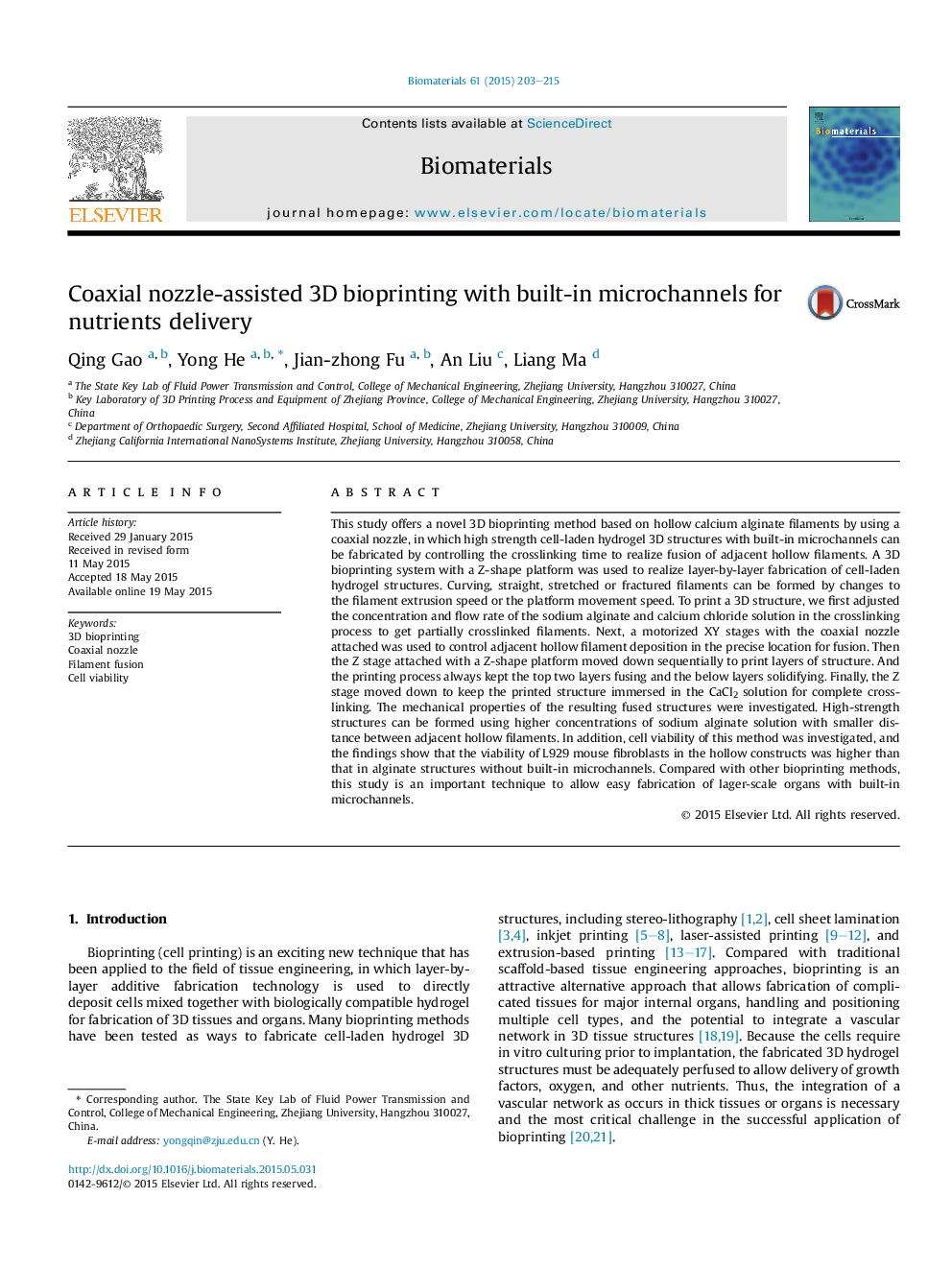| کد مقاله | کد نشریه | سال انتشار | مقاله انگلیسی | نسخه تمام متن |
|---|---|---|---|---|
| 6485622 | 408 | 2015 | 13 صفحه PDF | دانلود رایگان |
عنوان انگلیسی مقاله ISI
Coaxial nozzle-assisted 3D bioprinting with built-in microchannels for nutrients delivery
ترجمه فارسی عنوان
بیو تراپی با سهولت کواکسیال نازل با میکرو کانال های داخلی برای تحویل مواد مغذی
دانلود مقاله + سفارش ترجمه
دانلود مقاله ISI انگلیسی
رایگان برای ایرانیان
کلمات کلیدی
بیو چاپ سه بعدی، نازل کواکسیال، فیوژن فیوژن، زنده ماندن سلولها،
موضوعات مرتبط
مهندسی و علوم پایه
مهندسی شیمی
بیو مهندسی (مهندسی زیستی)
چکیده انگلیسی
This study offers a novel 3D bioprinting method based on hollow calcium alginate filaments by using a coaxial nozzle, in which high strength cell-laden hydrogel 3D structures with built-in microchannels can be fabricated by controlling the crosslinking time to realize fusion of adjacent hollow filaments. A 3D bioprinting system with a Z-shape platform was used to realize layer-by-layer fabrication of cell-laden hydrogel structures. Curving, straight, stretched or fractured filaments can be formed by changes to the filament extrusion speed or the platform movement speed. To print a 3D structure, we first adjusted the concentration and flow rate of the sodium alginate and calcium chloride solution in the crosslinking process to get partially crosslinked filaments. Next, a motorized XY stages with the coaxial nozzle attached was used to control adjacent hollow filament deposition in the precise location for fusion. Then the Z stage attached with a Z-shape platform moved down sequentially to print layers of structure. And the printing process always kept the top two layers fusing and the below layers solidifying. Finally, the Z stage moved down to keep the printed structure immersed in the CaCl2 solution for complete crosslinking. The mechanical properties of the resulting fused structures were investigated. High-strength structures can be formed using higher concentrations of sodium alginate solution with smaller distance between adjacent hollow filaments. In addition, cell viability of this method was investigated, and the findings show that the viability of L929 mouse fibroblasts in the hollow constructs was higher than that in alginate structures without built-in microchannels. Compared with other bioprinting methods, this study is an important technique to allow easy fabrication of lager-scale organs with built-in microchannels.
ناشر
Database: Elsevier - ScienceDirect (ساینس دایرکت)
Journal: Biomaterials - Volume 61, August 2015, Pages 203-215
Journal: Biomaterials - Volume 61, August 2015, Pages 203-215
نویسندگان
Qing Gao, Yong He, Jian-zhong Fu, An Liu, Liang Ma,
